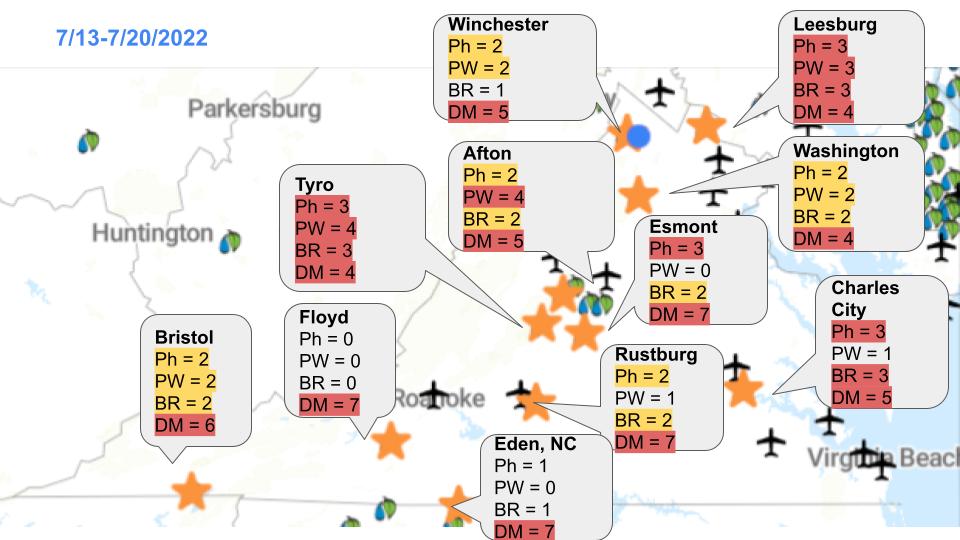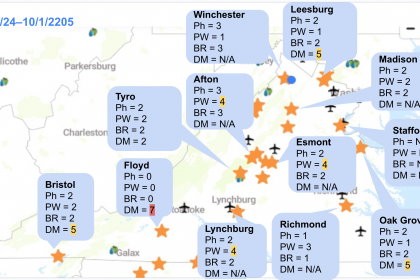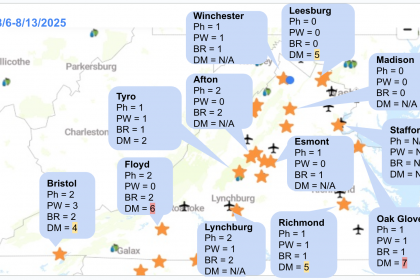Here’s a snapshot from the last week, showing the number of days with the risk of each disease: Ph = Phomopsis, PW = Powdery mildew, BR = Black rot, and DM = Downy mildew.

The image above is just a summary of the past 7 days. Please visit https://newa.cornell.edu/ to obtain more detailed information. You can check daily weather data as well as disease and insect pest model results including forecasted risks. We paid the annual fee so that growers in Virginia can freely access NEWA. Please take advantage of the resources. This information was made available through Wine Board-funded the Sentinel Vineyard project. We obtained NEWA weather stations that have been installed throughout the state.
More than a few days with downy mildew risks were observed across nearly all weather stations in the past 7 days. Based on the weather patterns in the past few months or so, it looks like we are more or less “normal” in terms of disease risks this year (i.e., many days with downy mildew risks), compared with the last year which was very dry for some of our regions.
If you are in an area where the number of days with downy mildew has been high, in the last several weeks, please consider protecting your vines with downy mildew material(s).
Having said that, the spray decision needs to be based not only on the weather condition but on the cultivar and history of the disease(s) in your vineyard. For example, if your vineyards have been clean and vines are protected from the previous application of fungicides, there is no need to make “rescue” sprays.
On the other hand, if you know you have seen a concerning level of downy mildew in the past, your spray was more than 10 days ago, and if you saw more than 2 inches of rain, it is probably a good idea to mix a phosphonate (i.e., a “phos acid”, such as Prophyt or Phostrol) for downy mildew.
At this point, our focus will be on powdery and downy mildew until veraison when we need to protect clusters from late-season rots. You can find specific materials information in this post (mid-season disease management), this post (VVA presentation), or this one (bloom time reminders).
Disease management consideration after a hail event?


At least two hail events passed through northern VA in the past 2-3 weeks, and many are dealing with cracker berries. I received several emails concerning diseases. Luckily, this time of the season, these berries are not accumulating enough sugars to be concerned about Botrytis or other opportunistic pathogens. These berries will dry out; thus, you don’t need to make any special sprays for them (but keep your regular sprays as noted above.)





